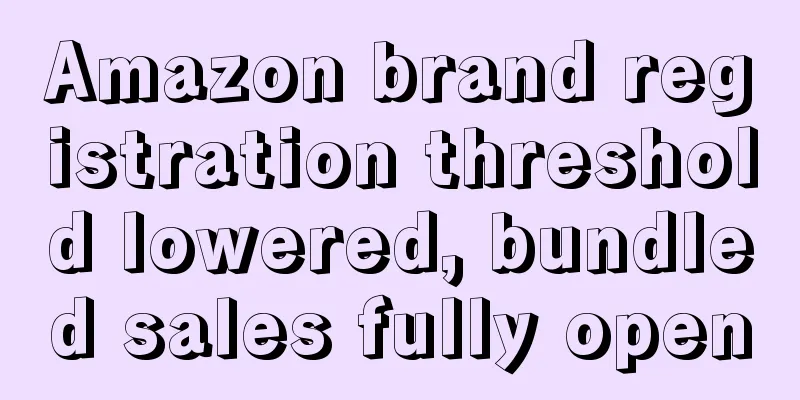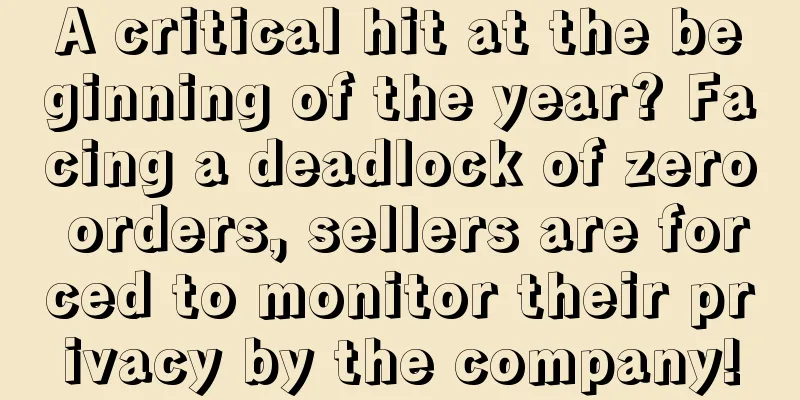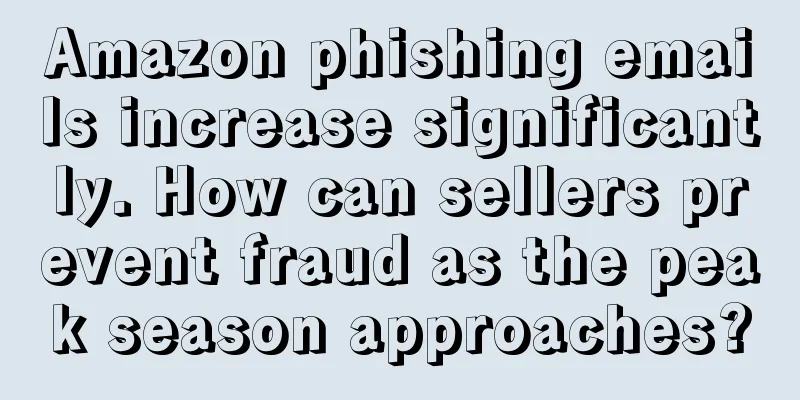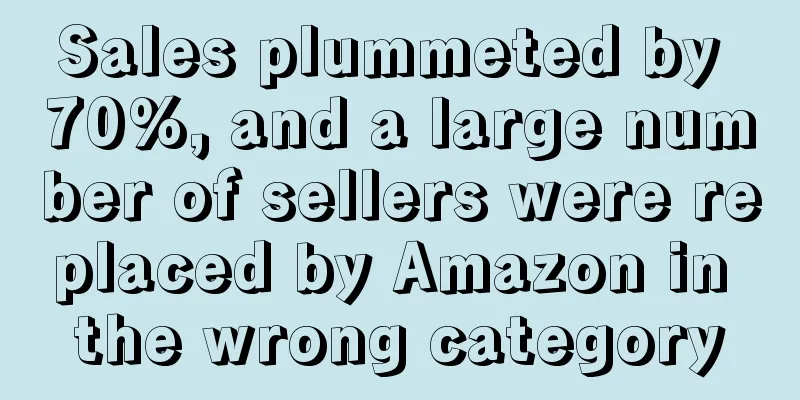How to create a million-level seller on Amazon?
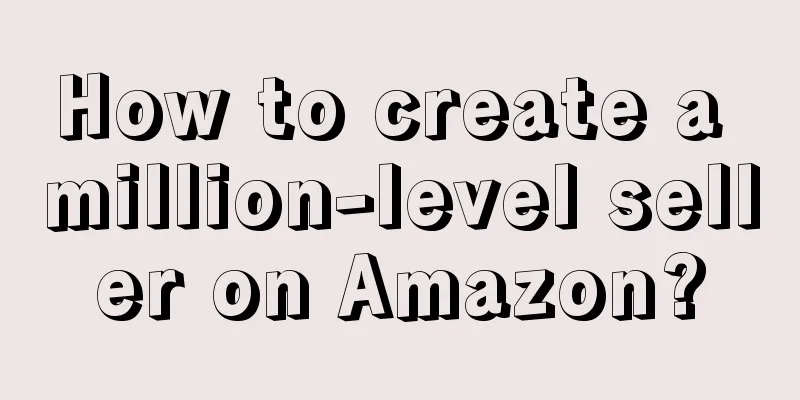
1. Age, gender and geographic locationData statistics on Amazon sellers show that there is not much difference between million-level sellers and non-million-level sellers in terms of age, gender and geographical location.
2. Time, information, motivation and ambitionThere are three main reasons why millionaires are successful on Amazon:
In addition, these millionaire sellers are more confident in their own selling expertise. When asked about their overall knowledge of Amazon, more than half (53%) of millionaire sellers said they have a “high” level of knowledge about Amazon. 42% of non-millionaire sellers consider themselves to have at least an “intermediate” level of Amazon selling knowledge, while only 6% consider themselves to be advanced sellers. Millions of Knowledge Points: Cultivating a Growth MindsetDan Vas, the founder of Amazon's million-selling FBA course Ecom Freedom, attributes much of his success to having an entrepreneurial mindset, that is, believing that he has the ability to be a successful entrepreneur.Dan said, "One of the biggest challenges a new entrepreneur faces is to overcome your fears and limiting thoughts. To succeed, you have to believe in yourself." Dan realized in his first 9-to-5 job that he had bigger ambitions and could do something bigger, which laid the foundation for his future success. He encouraged other sellers to start their business with determination. "There are only two paths ahead, success and experience. The only failure is giving up on yourself." Flexibility and tenacity are the keys to long-term success, as well as learning to delay gratification. Sellers must accept that this industry takes time to see the fruits of their labor, otherwise they will quickly get bored and give up. 3. Start a business without hesitationCompared with non-millionaire sellers, millionaire sellers start their own businesses faster and require larger startup investments.
Millions of Knowledge Points: Quick AttackDan founded Amazon and a startup coaching company in the same year, and earned his first million dollars by offering courses within 9-10 months, becoming a millionaire at the age of 21. Many Amazon sellers have to balance day jobs, family and other responsibilities, and the time and financial resources they can invest may be limited, but the majority of sellers believe they should have started Amazon earlier (49% of millionaire sellers and 74% of non-millionaire sellers). 4. Private label business modelCurrently, private label is the most popular business model among millionaire sellers (81%), followed by wholesale (64%). The situation is similar for non-millionaire sellers, with 64% of them owning their own brands and 23% engaging in wholesale. Millionaire sellers also prefer dropshipping (12% vs. 8%). Dropshipping products are provided on demand, and sellers do not need to tie up money in existing inventory. Therefore, high-income earners are often able to offer a richer range of products. In addition, the proportion of millionaire sellers adopting retail or online arbitrage models is relatively low (25%, compared to 39% for non-millionaire sellers). Since inventory and demand are constantly changing, it takes a lot of time to develop a continuous arbitrage model, so non-millionaire sellers are more likely to choose the arbitrage model. The magic of the private label model: "There are three main reasons why the private label business is so successful on Amazon. First, the seller's product listing is unique and there is no need to compete with other sellers for the Buy Box; second, unlike the arbitrage model, private labels have unlimited inventory sources and do not need to worry about finding inventory; finally, private labels have real brand value." Millions of knowledge points: Draining traffic from your listingsBuilding your own brand is a process from 0 to 1, which requires creativity and foresight, and requires more effort and hard work. Any good ideas? Leverage social media. "Amazon loves external traffic. External traffic not only brings in new orders, but also helps Amazon acquire new Prime members and other product sales." Sellers are advised to build a strong brand presence on social media to effectively and efficiently increase brand awareness and grow their Amazon business. This will also help with brand valuation if there is an intention to sell the brand in the future. 5. Rich product listingsOverall, Amazon millionaires have more product listings. 72% of millionaires have 20 or more active product listings on Amazon. In contrast, 70% of non-millionaires have only 10 or fewer active product listings. 34% of millionaire sellers have 250 or more product listings on Amazon, compared to only 5% of non-millionaire sellers. Expanding the product line needs to be a strategic move to increase value. More products means more sales opportunities, which may be one of the reasons for the difference in sellers' income. Millions of Knowledge Points: Surpassing the CompetitionTatiana James, an e-commerce expert and influencer who launched her own million-dollar private label on Amazon in 2014, said, “Failures in product innovation are very common. Competition on Amazon is getting more intense, and product quality is improving. Selling on Amazon is not a passive, get-rich-quick path. To be successful, sellers must do research and innovate to add value to their brands.” To ensure that the product would become a bestseller, Tatiana took the following steps:
But having more product listings is not a requirement for Amazon sellers to be successful. If you convert the revenue of $1 million by selling one product per year, it is equivalent to $83,000 per month, or about $2,800 per day. If the product is priced at around $25-30, you need to sell 100 units per day. If you have 5 product listings, you only need to sell 20 units per day. As sales grow rapidly, you can sell millions of units without a large number of product listings. Therefore, success also depends on where you sell your products. 91% of millionaire sellers choose to list their products on Amazon US, while the proportion of non-millionaire sellers is 76%. In addition, millionaires also tend to expand into other e-commerce markets, such as eBay, Shopify, Walmart or Facebook. 6. Spend more timeAmazon millionaires spend more time running and growing their businesses. More than half (53%) of millionaires say they spend more than 30 hours per week on their business, compared to only 16% of non-millionaires. The time devoted to Amazon does pay off. While both groups have similar rates of part-time and full-time jobs outside of Amazon, millionaire sellers are more likely to work exclusively on Amazon or have someone on staff (54% vs. 40%). In addition, millionaire sellers are more focused on areas that boost their business, such as off-site product marketing, monitoring financial status and earning reviews, while non-millionaire sellers may spend more time on product selection. Million Knowledge Points: Patience is the cornerstone of successMillionaire sellers are able to focus on multiple things, perhaps because they have been selling for longer, with 78% having at least two years of Amazon selling experience, compared to 79% of non-millionaire sellers who have been selling for two years or less. During the COVID-19 pandemic, the business performance of millionaire sellers was also better than that of non-millionaire sellers. 61% of millionaire sellers said that their Amazon sales performed better due to the pandemic, while only 35% of non-millionaire sellers saw an increase in business volume, and 36% of non-millionaire sellers were not sure whether their sales volume was improving or declining during this period. Three-quarters of Americans believe that online shopping is the future of retail, and Amazon is their favorite shopping destination. As more and more consumers turn to e-commerce platforms, sellers have huge room for development, so persistence may win. 7. Don’t be stuck in the momentThe Amazon sales journey is not always smooth sailing. It is inevitable to encounter obstacles when selecting products, negotiating with suppliers, and bidding on PPC. 66% of Amazon sellers have fallen into analysis paralysis, hesitating to move forward. Millions of Knowledge Points: The Big PictureIn order to overcome obstacles, it is better to look further ahead and figure out what exactly is the obstacle that affects business expansion. You can think about it in two ways: do you need to optimize existing products or add more SKUs? After figuring this out, make a plan accordingly and execute it. In recent years, the Amazon seller resource industry has exploded. In addition to paid tools and services, there are many free education, guidance, and cooperation opportunities. Sellers should maximize the use of these resources and seek support and help when they are insufficient. Becoming a millionaire is not everyone's goal, but learning from experience should keep pace with the times, and there must be something we can learn from the common points of successful people. The Amazon market is already crowded, will you be the next millionaire or even 10 millionaire? ► Useful Information Sharing Some new product promotion steps and promotion models. Time schedule |
>>: How to correctly fill the Amazon “review pit”?
Recommend
High inflation can’t stop the passion for shopping! Mexico’s year-end peak season shopping trends
According to the latest research released by Kanta...
What is Linkfluence? Linkfluence Review
Linkfluence is a tracking and analysis tool for Fa...
What is Profit Bandit? Profit Bandit Review
Profit Bandit is a product research tool for iOS a...
What is Dubizzle? Dubizzle Review
Dubizzle was founded in 2005 and is dedicated to p...
The 17-week continuous decline in freight rates has come to an end. Will the surge in member-day shipments aggravate port congestion?
The shipping market has been somewhat different th...
What is ZEBO Sunvalley? ZEBO Sunvalley Review
Sunvalley Group was founded in 2007 and has grown ...
Amazon, a "convicted monopoly criminal", abandons multiple affiliated brands
Amazon faces antitrust lawsuit Some sellers said ...
What is Zon.Tools? Zon.Tools Review
Zon.Tools is an Amazon PPC automation management t...
What is Keyword Snatcher? Keyword Snatcher Review
Keywordsnatcher is a keyword mining software. Ente...
Latest news! Payment giant PayPal denies acquisition of Pinterest!
<span data-shimo-docs="[[20,"PayPal表示无意收购P...
What is the US Federal Trade Commission (FTC)? US Federal Trade Commission (FTC) Review
The Federal Trade Commission (FTC) is an independe...
Amazon's Fall Prime Day is coming! How can sellers avoid "peak season anxiety"?
Not long ago, Amazon officially announced that its...
What is Aloha? Aloha Review
Aloha is an organic plant protein brand that is US...
Attention sellers! Amazon has closed two FBA warehouses, and sellers may not be able to ship in the near future
Recently, sellers on Amazon North America have bee...
What is Joyingbox? Joyingbox Review
Joyingbox is committed to building a future-orient...



